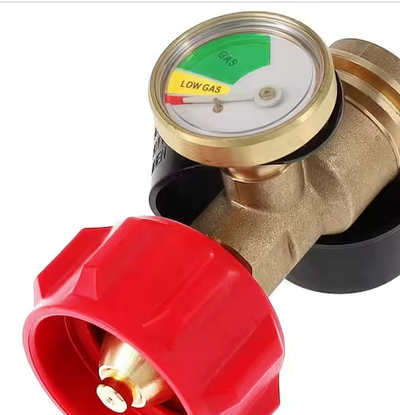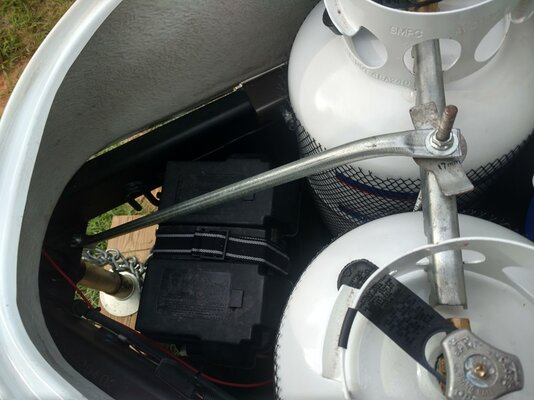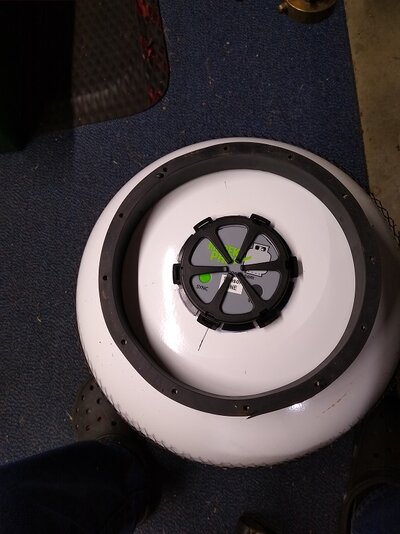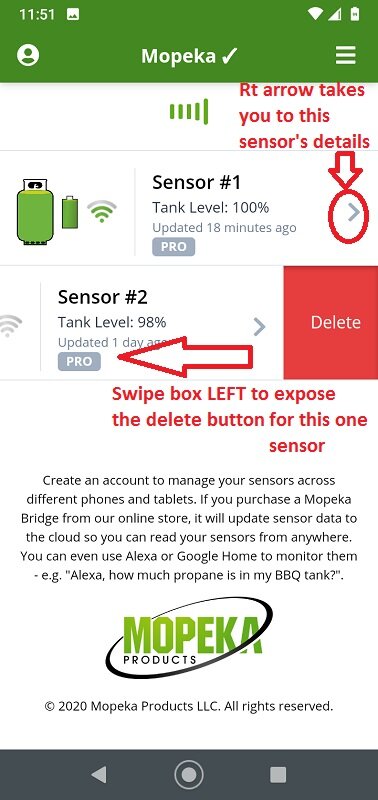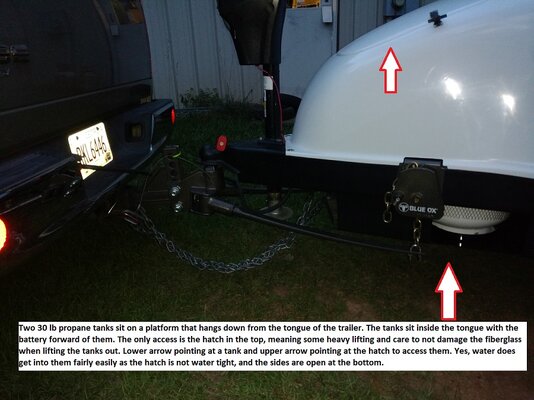Ok let's see, I'll try to get to everyone's questions and comments
Just a thought, if you're currently working with propane equipment, & have the tools for it, couldn't you simply remove the valve, remove or cut off the dip tube, then reinstall the valve?
If I were using them as vertical tanks this would probably work but horizontal no. Or at least not without substantially reducing the capacity to make sure I don't draw liquid out.
Will finding refill stations that are familiar with filling forklift tanks be a problem? I know you know how to do it, but will they let you if they don't. Most of the refiller attendants I run into have not been formally trained on refilling at all, just whatever the station owner or other employees have informally taught them, mostly just standard cylinders and maybe motorhome tanks.
You brought up a good point that I hadn't really thought about, which I guess is why I made this thread so thanks.
To answer it though, kind of. Filling a forklift cylinder is exactly the same as a residential cylinder. Open the valve on the fill whip (there's not one on the fill fitting of the forklift cylinder, that one is a one way check valve) crack the spitter open and wait until liquid comes out of the spitter.
The only real difference is the fill fitting itself is larger. The thing about that is MOST dispensers use that larger fitting and then have an adaptor to go down in size to the POL thread size which is the one used for residential tanks .
Even if a dispenser doesn't do it that way and only has a POL fill whip, those POL threads are what is on the liquid output valve of the forklift tank. I'm going to check on this but I'm pretty sure you can still fill in through that POL fitting.
I like the idea of having something "industrial" vs "retail". A liquid level gauge goes a long way towards eliminating the guesswork. Sidebar - I keep an inexpensive hanging spring scale in my quick access compartment I use to weigh grill tanks. ~37lbs full, 17lbs empty. Easy peasy but it does require the tank to be "loose" for weighing. I run my class A from grill tanks often so I don't tap into my main tank if I don't have to. My only departure from your idea is why you'd want two large tanks for a popup. I can run my class A in freezing temperatures for 3 days on a grill tank without trying. 2 tanks I could go for a week if I was mindful. Maybe a popup would take more Btu's to heat than my class A but I'm just pondering what you're using so much propane for. Maybe extended stays, I don't know. Seems like a lot but can also appreciate if you're fabricating a frame/mount/plumbing it may not be that much more work for two.
Unknowns on my part - could you flip the valve/gauge assembly so when the tank is inverted the gauge is right and the pickup and vent is in vapor space? It would then be a "modified" tank but if these are "yours" then having a nonstandard tank would be OK. Do these tanks have the same fill fitting as 20lb tanks? I've never paid attention to what connections forklift tanks have. Are they stamped like grill tanks and would a retail propane supplier be OK filling them? Thinking about what you might encounter out in the wild at a campground or RV park that sold propane. They fill grill tanks all day long but something unfamiliar might get some scrutiny.
Then after all this, why not a permanent tank like those found in motorhomes? Mine's 18 gallons, so ~14 gallons to 80%. Has a standard fill spigot, liquid level gauge that can be monitored remotely and is basically plug and play to RV appliances. No exchange option but then you wouldn't have that with forklift tanks either (at least at retail stores). Just thinking that with the forklift tanks you might be reinventing some wheels, not that it wouldn't work OK but is extra time and effort for no real gain over solutions that already exist. But I like the way you think, I'm always working angles to come up with solutions using existing hardware.
Mark B.
Albuquerque, NM
Let's see lots going on here.
As to why. Not going to lie, "because I can" is a motivator. If you could get propane at around $1.50 a gallon I bet you would also start looking at ways to use it. Also I can potentially get the forklift tanks for cheap. Wife and I want to move to a Blackstone flattop cooker which I'm sure will also use more gas and we want a propane fire pit for camping as well. We were already thinking about getting a generator both for camping and backup home use so I thought, why not get a propane one and then not have to mess with gas.
So. Furnace, hot water, Blackstone, fire pit and generator all potentially running off of the trailer system.
Flipping the gauge might be possible. The way they work is the float mechanisms inside the tank has a set of magnets that then sit on the opposite side of basically a plug on top of the tank. The gauge locks onto that plug and has its own set of magnets to then move the needle. There's nothing that actually penetrates the tank to get the needle to move. Now the gauge has an indexing "key" (bump of plastic) that sits in an indent in the plug. It might be possible to cut off the key and rotate the face 180. Really I'm not too worried about it though. I'll know that when it reads 1/4 it actually means 3/4 and that's all I really need.
Why not permanent mount one large tank, 2 reasons. As I mentioned we want to do a generator both for camping and emergency backup (our house doesn't have heat without power) so if I already have these nice forklift tanks, might as well use them. Where we park the camper though, if the generator was there it would need around 200ft of extension cord to get into the house. Much easier to take one of the tanks off the trailer and bring it over to the house.
The other, and I think more important things is filling. It's a pop up so if it's a permanent mounted tank I would need to collapse and pack up the whole trailer to go get more propane rather than removing one or both tanks and bringing them somewhere in the truck
What time and effort are you taking about though?
Propane systems have been around for a long long time,,, Why try to reinvent the wheel??.>>>Dan
Where is the advantage??
What am I reinventing? I'm using larger tanks
Advantages: double the capacity I currently have while maintaining roughly the same footprint on the trailer tongue
An actual gauge on each tank
Still maintain the ability to remove and take tanks in to fill (chances are I'll never need this but I like the flexibility of it)
Ability to run pretty much whatever I wanted as I'll have the gas to do so
Disadvantage: tanks will be heavy when full (if it works the way I think it will, the only time they would be off the trailer is for the emergency generator at home)
Work required to mount them?
I boondocked with my popup 3 times at one week each. We traveled with the fridge in 12v mode but was on propane the rest of the time. We had maybe 1/2 our meals cooked on the stove. I had no water heater on board. With that I used less than 1/2 of the single 20lb tank on the trailer. If you use propane at the rate I did, double 43's will keep you going non-stop for about 8 weeks. Do you anticipate that kind of need?
8 weeks? No. But I'm also expecting to be using it at a much faster rate than you were. Look at it this way, from completely empty those two forklift cylinders will cost me around $30 to fill. That's total not each. Why the hell would I not use it? I am, 100% expecting to not need to fill the tanks between each camping trip, if that's true that's one less thing I need on my to do list which also sounds nice. If I do need to fill, whatever, I'll drive the delivery truck to my house and fill them while they are still on the trailer on a day I'm in the area.

